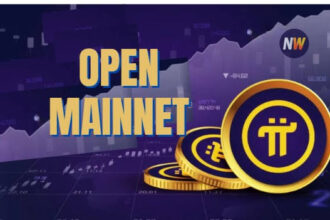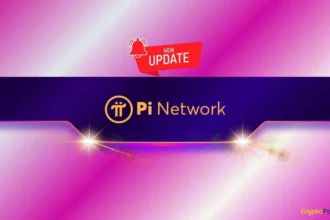The Pi Network, a decentralized and user-friendly blockchain ecosystem, has attracted a substantial following since its inception, with millions of users mining its native token, Pi, through their mobile devices. Despite the community’s growth and excitement, the listing of Pi on exchanges has generated significant controversy, sparking debates within the community and beyond. For some, this anticipated listing represents the culmination of years of mining, a milestone marking Pi’s recognition as a valuable digital asset. For others, especially the development team, this move threatens to disrupt Pi Network’s carefully laid-out roadmap and affect the broader ecosystem, including online marketplaces like Pi Barter Mall, Pi Chain Mall, and Paixingshop.
The Appeal and Complexity of Pi Network’s Roadmap
The Pi Network’s development team has a distinct vision for the token’s journey to market, intending for Pi to grow organically within the ecosystem before its launch on major exchanges. Unlike most cryptocurrencies, Pi’s mining process does not rely on high-power computing resources, instead allowing users to mine directly from their mobile devices. This accessibility has driven widespread adoption, with Pi miners accumulating tokens over the years in anticipation of a future value.
Pi Network’s roadmap hinges on achieving a mature ecosystem before moving to the open market. The development team’s focus is on fostering real-world applications and building a robust network where Pi can be used for transactions, payments, and value exchange within the ecosystem. A crucial part of this roadmap includes developing utility applications, especially online marketplaces where users can trade goods and services using Pi. The objective is to create a digital economy where Pi has tangible utility within the community, thereby building intrinsic value before it gains speculative value on exchanges.
The Unanticipated Consequences of the Pi Listing
Despite the roadmap’s focus on gradual ecosystem growth, the anticipated listing of Pi on exchanges, particularly after the mainnet launch, has introduced a layer of complexity. On one hand, the listing would establish a concrete market value for the Pi token, validating years of effort by miners and bringing immediate liquidity to Pi holders. On the other hand, this sudden listing would disrupt the organic growth model intended by the development team, imposing a market-driven valuation that could hinder the ecosystem’s internal economy.
Disruption of Pi’s Internal Economy and Online Marketplaces
One of the main components of Pi Network’s ecosystem is the series of online marketplaces that have been established. Platforms like Pi Barter Mall, Pi Chain Mall, and Paixingshop allow users to buy and sell goods and services in exchange for Pi tokens, creating a micro-economy within the network. These marketplaces operate on the assumption that Pi would remain within the network and its value would be defined internally by the community.
However, the potential listing of Pi on external trading platforms introduces a market-driven valuation, likely driven by demand and speculation. Such a scenario presents several challenges for these online marketplaces, where products and services have traditionally been priced at values far lower than their equivalent fiat or real-world worth. This discrepancy becomes evident with high-value items like the Tesla Model S, which has been listed on Paixingshop. Priced at an internal valuation of 1 Pi = 100, a Tesla Model S on Pi’s ecosystem would equate to roughly $2,000 in real-world value, a fraction of the manufacturer’s cost. The expectation is that such misalignments will create confusion, possibly undermining the community’s confidence in the viability of Pi as a payment method.
Impact on Pi’s Marketplaces: Value Discrepancy and Buyer Expectations
The listing of Pi on exchanges could create a significant shift in buyer behavior within Pi Network marketplaces. If Pi’s external market value exceeds the internally defined rate, goods and services on Pi-based platforms would become undervalued, incentivizing users to sell Pi on exchanges rather than spending it within the ecosystem. This shift could drain Pi from these marketplaces, diminishing their utility and disrupting the original vision of a closed-loop economy where users exchange Pi for real-world goods and services.
For instance, if the external market values Pi at a rate much higher than the current internal rate (such as 1 Pi = $100), users would prefer to convert their tokens to fiat or other cryptocurrencies, bypassing the ecosystem’s internal utility. This scenario would not only discourage participation in Pi marketplaces but also erode the trust and cohesion within the community, as members shift focus from using Pi for purchases to speculating on its value on exchanges.
Pi’s Price Discovery and Speculative Trading Concerns
The primary motivation behind listing Pi on exchanges is to create a liquid market where its value is determined by open trading. However, this mechanism is often influenced by speculative forces, which could introduce considerable volatility. Early adopters and miners may be eager to capitalize on years of mining by selling Pi on exchanges, potentially leading to a flood of tokens in the market, pushing down the price. Conversely, the excitement around a new token listing may drive prices up as traders seek to profit from initial interest, only to face corrections as the market stabilizes.
For the Pi Network, such volatility undermines the internal ecosystem’s stability. Within Pi’s closed economy, Pi tokens have an internally understood value, primarily based on user consensus rather than market forces. If Pi’s value fluctuates wildly in open markets, it creates uncertainty among marketplace participants, complicating pricing and possibly deterring users from spending or accepting Pi as payment.
Development Team’s Concerns: Threat to Ecosystem Integrity
The development team has voiced concerns regarding the listing, emphasizing its disruptive potential. Their goal is to have Pi’s value driven by real-world applications and internal utility, not by speculative trading. For them, the listing represents a premature leap that could stall ecosystem growth, shifting focus from development to price speculation.
A premature listing may cause participants to view Pi more as an investment asset rather than a currency with functional utility within the Pi Network. This shift threatens to undermine the foundations of Pi Network’s decentralized economy, as users prioritize market value over community-driven applications. Furthermore, the development team is concerned that such speculative interest may draw regulatory scrutiny, necessitating compliance efforts that could detract from ongoing projects.
The Path Forward: Balancing Utility and Market Value
While the listing of Pi on exchanges presents challenges, it also offers opportunities for the Pi Network to adapt and evolve. To strike a balance between Pi’s utility within the ecosystem and its market-driven valuation, the development team may consider implementing mechanisms that maintain the token’s utility while accommodating external market factors.
- Dual-Layer Economy: One potential solution is the creation of a dual-layer economy, where Pi tokens within the ecosystem operate at a fixed or community-determined rate, while exchange-listed Pi tokens reflect market-driven values. This approach would allow users to continue transacting in Pi marketplaces without being impacted by external volatility. Meanwhile, the exchange layer would provide liquidity and price discovery for those interested in trading Pi.
- Token Staking and Rewards: To incentivize long-term participation within the ecosystem, the development team could introduce staking rewards or incentives for users who keep their Pi tokens within the ecosystem. This strategy would reduce the supply of Pi on exchanges, helping to stabilize its market value while fostering user engagement within Pi’s decentralized economy.
- Partnerships and Collaborations: Partnering with reputable platforms and service providers could enhance Pi’s real-world utility, aligning its value with tangible applications rather than speculative trading. By integrating with retail chains, payment gateways, or service providers, Pi could establish itself as a viable payment option, stabilizing its value through use-case-driven demand.
- Enhanced Community Education: Addressing user expectations and promoting the importance of utility over speculation can strengthen the ecosystem’s cohesion. Regular communication from the development team, explaining the roadmap and reinforcing Pi’s role as a community-oriented digital currency, could help align users with the network’s broader vision.
Conclusion: The Future of Pi Network Amid Controversy
The listing of Pi on exchanges is undoubtedly a pivotal moment in Pi Network’s journey. While it fulfills the hopes of many Pi miners who have waited years to realize the monetary value of their tokens, it simultaneously challenges the ecosystem’s stability and disrupts the project’s long-term roadmap. The anticipated impact on Pi’s online marketplaces underscores the delicate balance between fostering an internal economy and establishing market-driven value.
For Pi Network to thrive amidst these challenges, the development team must adopt strategies that preserve the token’s utility within its decentralized ecosystem while allowing for measured integration with external markets. Only by fostering a dual focus on community-driven utility and external liquidity can Pi Network navigate this complex terrain, ensuring a sustainable future for both its ecosystem and its token’s value.
As the crypto landscape continues to evolve, Pi Network’s approach to handling this transition may offer valuable insights for other projects with similar aspirations. The ongoing controversy surrounding Pi’s listing highlights the challenges inherent in bridging decentralized economies with traditional markets, underscoring the need for careful, considered development in the ever-expanding world of digital currencies. Continue Reading
















